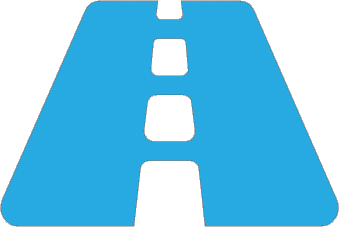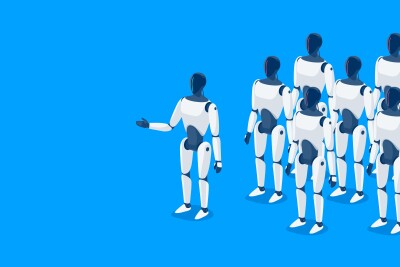Statoil is piloting laser scanning in anticipation of shortening a 24-month revamp of its Snorre-A offshore platform by two to three months. If the pilot proves that laser scan data is of sufficiently high quality to support engineering, the oil and gas company expects to be able to modify its platforms 8% to 12% faster – as well as saving travel time and cost by reducing offshore measuring and engineering labor.According to Terje Birkenes, piping design manager with Statoil, “Normally when we award a contract, the contractor travels offshore with point surveying systems to document existing conditions.” Surveying with total stations, he reports, “takes two to five months to document the tie-in points, the main steel, and so forth.” The new approach Birkenes is piloting is to hire a service provider “to do laser scanning before the award of the detail engineering project, because then the contractor can start at once.”
In offshore projects, there is much more room for laser scanning to accelerate schedules than to further reduce rework, according to Statoil. “In that discipline of measuring, you don’t get any credit for doing anything right, because fabrication expects you to do all that right,” Birkenes explains. “We can’t afford a lot of clashes – if that happens, they’ll just throw the whole thing out. We don’t have problems with the measurement technique we use now – point surveying with total
stations – so laser scanning must be at least that good.”
Quality of laser data being checked against total station survey grid
This project involves the installation of two new modules on Statoil’s Snorre-A offshore platform in the North Sea. Statoil reports it is piloting the use of laser scanning during the bid phase, and will use this
experience to decide whether to require the contractor to use laser scanning-based existing conditions data for engineering once a contract is awarded.
Laser scanning was carried out in November 2003 by Hitec Framnaes AS, a design and engineering firm active in the oil and gas, marine, and process industries, using the 3Dguru scanner from Visi Image, Inc. Birkenes describes the scanning work process: “I set up a list of 15 areas to scan. We have a grid system marked on the platform” originally put in place to support traditional point surveying, “so they did some testing of how to tie the laser scan into the grid system, in order to have a
backup with that traditional measurement system.”
Aker Kvaerner, which installed the coordinate grid, is evaluating the quality of the laser scan data by checking it against the grid. According to Inge Byrkjeland, maintenance/modification engineer with Hitec
Framnaes, “So far the results are very good, and the deviations very small.” The scanner used has a specified accuracy of 2mm, he reports, and in scanning a module measuring 20m x 22m, “the maximum global deviation across all registered scans is in the range of 5mm.” He calls
this extremely good, especially given that objects on a platform can move — “and we did the scans during a hurricane.”
If Aker’s evaluation is positive and if Statoil decides to use laser scanning on the full modification project, it will commission laser scanning of all areas relevant to the two new modules being installed. It will then provide this data to contractors for their use in preparing bids, and the winner will use it to begin engineering work. The information from scanning will also be used in the last phase of FEED (front-end engineering design).Complete, consistent bid data
In offshore revamp projects, bidders generally receive existing-conditions data from the owner in the form of paper documents, and sometimes 3D CAD models, according to Byrkjeland. In preparing bids,
as many as three bidders will visit the platform to carry out a preliminary survey of existing conditions. With helicopter trips and platform accommodations typically paid for by the owner, Statoil’s interest in
using laser scanning to reduce the total amount of offshore measuring and engineering labor is understandable.
Besides accelerating the start of engineering work and reducing offshore travel, Statoil is looking to laser scanning to give bidders more complete, higher-quality information than by traditional methods. By ensuring that all bidders get complete and consistent information on which to bid, laser scanning can remove one source of bid variance and thus make competing bids easier to compare. Statoil reports that in four to five weeks, it will know whether this is in fact the case.Finding a way to import point clouds directly into PDMS is “very important” to Statoil
The pilot project involved a total of 11 scans, each containing between 60 million and 70 million points, according to Hitec Framnaes. Software provided with the 3Dguru scanner was used to reduce each scan to 30% of its orginal size. The 3Dguru software creates a point-cloud file in a format called C3D, which contains 100% of the scan data. The 3Dguru software is then used to process the point cloud into the Leica/Cyra Cyclone PTS format. In this step, the operator specifies what percentage of the point-cloud data to bring across. According to Byrkjeland, this work process differs from “decimating” – where 100% of the data is exported to the point-cloud software application, then reduced using that software – but the results are equivalent.
Cyclone was then used to register all 11 scans. The registered scan data was used to create 3D models of key geometry in Cyclone. Modeled geometry was exported from Cyclone in COE/DGN format to MicroStation. These DGN models were then provided to Statoil for import into its AVEVA PDMS plant design system. If this pilot project leads to production use of laser scanning, registered scan data in Cyclone format will be provided to bidders for viewing with Leica/Cyra’s free Cyclone viewer software.
Byrkjeland has mixed views of Leica/Cyra’s Cyclone software. “In my opinion, Cyclone 4.1 does not handle enough points,” he says. “I can manage to work with 15 million to 20 million points in it easily, but if I try to push it futher, I start to get problems. In my opinion Cyclone is good software in many ways, especially in registration, and the modeling is also good. But we are now unhappy with Cyclone because I wish it could handle point clouds up to 100 million points easily. Then it would be
extremely efficient.” Leica/Cyra has said that the forthcoming Cyclone 5.0, due for commercial release in the first calendar quarter of this year, will readily support scan data sets of 500 million to one billion points.
Statoil, for its part, reports it is looking for a system that can import point clouds directly into PDMS. Emphasizing that this is very important, Birkenes reports, “Nine out of ten of our projects use PDMS. Most of our modifications also use PDMS.” AVEVA reported to Spar Point in December 2003 that it was in discussion with several leading providers of laser scanning technology, and that it will announce a strategy to enable the use of point-cloud data directly in PDMS in the early part of 2004.Tie-in data – who’s responsible?
Who is contractually responsible for verifying the accuracy of tie-in data – the contractor, the owner who provided laser scan data, or the laser responsibility lies with the subcontractor executing the work involved. If Statoil elects to use laser scanning on the Snorre-A module upgrade, we expect contractors who want the job will be willing to accept laser scan data for engineering. The winning bidder will probably spot-check critical areas using total station means, then use these spot checks to validate
the accuracy and confidence of laser scan data for itself.
This material is excerpted from Spar Point’s just-released publication
Capturing Existing Conditions with Terrestrial Laser Scanning: A Report on Opportunities, Challenges and Best Practices for Owners, Operators, Engineering/Construction Contractors and Surveyors of Built Assets and Civil Infrastructure








